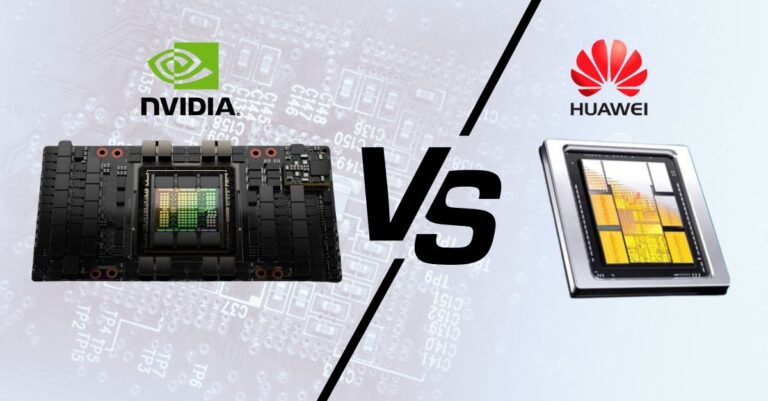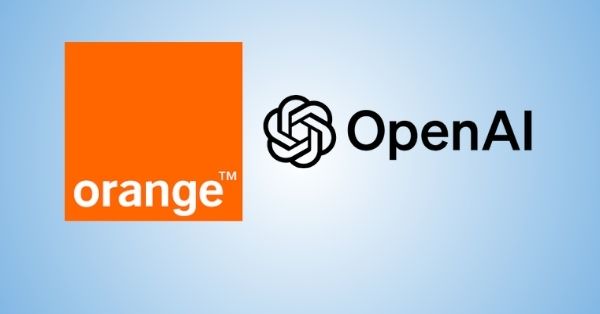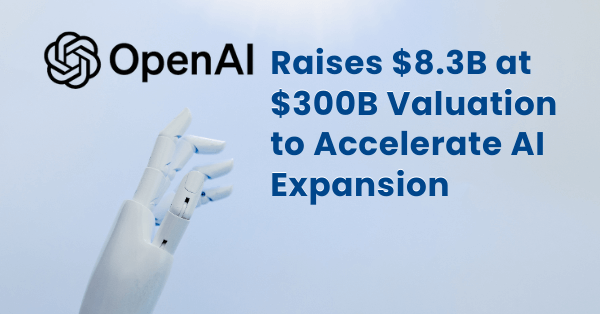Market Jitters as Huawei Unveils New AI Chip
On April 28, 2025, Nvidia shares fell over 2% following a Wall Street Journal report that Huawei is entering the final testing phase for a new artificial intelligence chip—the Ascend 910D. The chip is positioned to compete directly with Nvidia’s high-end H100 GPU, which currently powers many of the world’s leading large language models (LLMs) and enterprise AI infrastructure.
This development triggered concerns among investors about potential disruption to Nvidia’s China business, especially in light of tightening U.S. export controls. However, many analysts were quick to note that while Huawei’s chip might gain traction within China, it poses little threat to Nvidia’s global dominance in the near term.
Huawei’s Ascend 910D Responds to U.S. Export Bans
The Huawei Ascend 910D is the latest in the company’s Ascend series of AI accelerators. Its launch is part of China’s broader effort to achieve semiconductor self-reliance, especially as U.S. sanctions restrict access to leading-edge chips and design tools.
The 910D aims to replace Nvidia’s H100 in Chinese data centers, but its development has been shaped by constraints. It reportedly uses SMIC’s 7nm process, a notable technical achievement given China’s limited access to EUV lithography tools. However, this process node is two generations behind what Nvidia uses in its Hopper-based H100 GPU, which is manufactured on TSMC’s 4nm node.
Despite this gap, Huawei claims that the Ascend 910D could outperform the H100 in specific AI workloads—although no independent benchmarks have yet been released.
Huawei Ascend 910D vs Nvidia H100: Technical Comparison
Huawei and Nvidia are both building AI accelerators to power the next generation of machine learning models, but they’re approaching the challenge from very different angles. Below is a detailed, section-by-section comparison of the two chips, focusing on architecture, memory, efficiency, scalability, and ecosystem readiness.
1. Compute Architecture & Raw Performance
While Huawei has made bold claims about the performance of the Ascend 910D, specific architectural details remain sparse. Nvidia’s H100, on the other hand, is well-documented and features innovations specifically optimized for training and inference of large AI models. Here’s how they compare on raw processing capability:
| Feature | Huawei Ascend 910D | Nvidia H100 (SXM) |
|---|---|---|
| Architecture | Proprietary (HiSilicon) | Hopper (TSMC 4nm, 80B transistors) |
| Tensor Cores | Not disclosed | 640 4th-gen Tensor Cores |
| CUDA Cores | N/A | 16,896 CUDA Cores |
| Peak Compute (FP8) | Not disclosed (claimed superior) | Up to 3,958 TFLOPS |
| Peak Compute (FP64) | N/A | 67 TFLOPS (Tensor Core) |
| AI Optimizations | Proprietary | Transformer Engine, CUDA, cuDNN |
Huawei claims performance parity (or superiority) to the H100, but without transparent specifications or third-party validation, Nvidia remains the gold standard.
2. Memory and Bandwidth
Memory bandwidth and speed are essential in high-performance AI workloads, where moving data quickly can significantly improve training times. Nvidia’s H100 uses cutting-edge HBM3 memory, while Huawei’s solution is based on older memory generations:
| Feature | Huawei Ascend 910D | Nvidia H100 (SXM) |
|---|---|---|
| Memory Type | HBM2 or HBM2E (older) | HBM3 |
| Capacity | Not disclosed | 80GB or 96GB |
| Bandwidth | Not disclosed | Up to 3.35 TB/s |
The Nvidia H100 benefits from the latest memory technologies, providing far higher memory bandwidth and data throughput—critical for training large models and real-time inference.
3. Power Efficiency and Scalability
Efficiency is not just about performance per chip—it’s also about how well chips perform at scale, especially in massive data centers where power and cooling costs can be prohibitive. Huawei and Nvidia approach scaling very differently:
| Feature | Huawei Ascend 910D | Nvidia H100 (SXM) |
|---|---|---|
| Power Draw (TDP) | Higher, less efficient | Up to 700W (optimized) |
| Cooling | More intensive | Data center-optimized |
| Scalability | Optical mesh (910C/910D) | NVLink, NVSwitch, InfiniBand |
Huawei uses an all-optical interconnect approach in some Ascend systems, linking hundreds of chips to compete in aggregate throughput. This brute-force strategy, however, often leads to inefficiencies in power and cooling, making it less suitable for enterprise-scale deployments without subsidies.
4. Software Ecosystem & Developer Tools
A chip is only as powerful as the tools that support it. Nvidia has spent over a decade building a full-stack software ecosystem with widespread developer adoption. Huawei is still building out its platform, and while it’s progressing quickly, it has a long way to go in terms of tooling and global support:
| Feature | Huawei Ascend 910D | Nvidia H100 |
|---|---|---|
| Ecosystem | MindSpore, Ascend AI | CUDA, cuDNN, TensorRT |
| Developer Support | Limited | Extensive, global |
| Toolchain Maturity | Emerging | Highly optimized |
| AI Framework Support | Moderate | Fully supported (TensorFlow, PyTorch, etc.) |
Nvidia’s CUDA ecosystem remains unmatched. It’s not just about chip performance—it’s about the entire stack: optimized software, drivers, libraries, and community support. Developers globally continue to prefer Nvidia because the end-to-end ecosystem dramatically shortens time-to-production.
Ascend 910D Gains Support from China’s Domestic Tech Sector
Despite global limitations, Huawei’s chips have gained traction within China’s borders. Domestic firms like ByteDance and major telecom providers have placed large orders for the Ascend 910B, 910C, and now the 910D.
Several factors drive this:
- Policy incentives for buying domestic chips
- Export bans on Nvidia H100/H20
- National security concerns and data sovereignty
- Financial subsidies for infrastructure built around Ascend chips
This creates a parallel AI hardware ecosystem that, while less efficient than Nvidia’s, is “good enough” for many Chinese applications. The Chinese government’s long-term semiconductor strategy is pushing forward regardless of cost.
Why Huawei’s AI Chips Face Global Trust and Efficiency Hurdles
Outside of China, however, Huawei faces significant hurdles. Analysts argue that adoption is limited not only by technical factors (e.g., lower memory bandwidth, limited scalability) but also by political concerns and lack of trust in Chinese technology.
As Richard Windsor of Radio Free Mobile noted:
“There’s a clear disadvantage for Chinese AI when it comes to global perception. Huawei’s hardware may gain traction domestically, but its international appeal will remain limited by efficiency, cost, and trust.”
This makes the Ascend 910D an important national solution, but not a viable global Nvidia competitor—at least not yet.
Analysts Reaffirm Nvidia’s AI Lead Despite Huawei Challenge
Despite the stock dip, analysts remain bullish on Nvidia’s prospects.
- Matt Bryson (Wedbush Securities) reaffirmed an “outperform” rating on Nvidia stock, citing Huawei’s manufacturing limitations and lack of node parity.
- Gil Luria (DA Davidson) estimates that up to 40% of Nvidia’s revenue could be linked to China—much of it unofficially—but cautions that complete replacement is unlikely due to technical inferiority and ecosystem dependence.
China’s Policy, Not Huawei’s Chip, Is Nvidia’s Bigger Risk
The more serious threat to Nvidia may be regulatory, not technical. China could mandate the use of Huawei chips in sensitive industries or critical infrastructure, which would force Nvidia out regardless of product superiority.
- Nvidia already forecast a $5.5 billion hit from the H20 export ban.
- JPMorgan estimates Nvidia could lose up to $16 billion in China revenue in 2025 under worst-case scenarios.
- In FY2025, Nvidia generated approximately $17 billion (13%) of its total revenue from China.
Nvidia Expands U.S. Supply Chain to Counter China Risk
To mitigate the China risk, Nvidia is scaling its U.S. manufacturing and supply chain, pledging $500 billion in domestic investments through partnerships with TSMC, ASML, and American fabs.
CEO Jensen Huang’s recent visit to China underscores the company’s desire to maintain ties while navigating a volatile policy landscape.
What Huawei’s Chip Means for the Global AI Hardware Landscape
Huawei’s Ascend 910D, while not yet a global contender, signals a maturing AI hardware ecosystem in China. The country’s ability to design competitive chips despite sanctions speaks to its strategic determination.
Still, performance parity is not enough. In today’s AI economy, success depends on:
- Software ecosystem lock-in
- Energy efficiency and TCO
- Hardware-software co-optimization
- Global developer adoption
This is where Nvidia remains multiple years ahead—and likely to stay so without major disruption in chip manufacturing technologies.
Huawei vs Nvidia: Clear Global Leader Despite Growing Local Rival
After examining the critical aspects of chip design—from compute performance to software stack—it’s clear that Huawei is making strides, particularly in a constrained regulatory environment. But Nvidia continues to lead in nearly every metric that matters for global AI adoption:
| Metric | Nvidia H100 (SXM) | Huawei Ascend 910D |
|---|---|---|
| Architecture | Hopper, 4nm | Proprietary, 7nm (SMIC) |
| Memory Bandwidth | 3.35 TB/s (HBM3) | Lower (HBM2/2E) |
| Ecosystem Maturity | CUDA, TensorRT, cuDNN | MindSpore, Ascend |
| Power Efficiency | High | Lower |
| Availability | Global | China-only (May 2025 test) |
| Software Integration | Excellent | Developing |
| Independent Benchmarks | Verified | Not released |
Not a Global Threat—Yet
The Huawei Ascend 910D is a major step forward for China’s AI ambitions. It reflects real progress in chip design under sanctions and may eventually serve as a viable national alternative to Nvidia for many use cases inside China.
However, it currently lacks the technical polish, ecosystem integration, and international trust to challenge Nvidia’s global dominance. As AI models grow in size and complexity, Nvidia’s ability to provide efficient, scalable, and integrated solutions keeps it firmly in the lead.
The real battle may be less about chip specs—and more about the politics of technology sovereignty.































